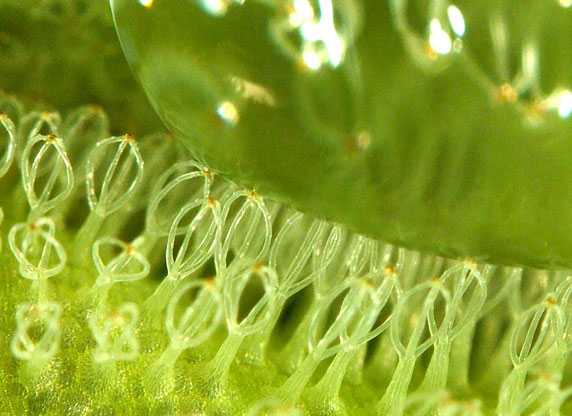Nature has provided the oil remediation industry with a promising blueprint for future tech - in the form of a pesky weed. The Salvinia water fern is one of the more insistent weeds in Brazil - hard to kill and quick to reproduce, the ferns can double in size within a matter of days and are regarded as a major nuisance by local farmers.
Recently, scientists at the Karlsruhe Institue of Technology (KIT) have discovered that the Salvinia fern possesses an outstanding capacity for oil absorption. The key lies within the superhydrophobic and superoleophilic leaves that trap oil while repelling water. The results are nothing short of impressive.
The researchers observed that the tiny eggbeater-shaped hairs called trichromes on the leaves of the Salvinia are what give it the amazing properties. The nested space between the hairs keeps water in a suspended state of tension, not allowing it to permeate the leaf. The same unique trichromes act as a trap for oil, allowing for maximum absorbency within as quickly as 30 seconds. As far as oil absorbency, the Salvinia performed on the same level as leading artificial oil sorbents like Deurex Pure and Ol-Ex - even outperforming them on tests that involved more viscous, thin oil.

The eggbeater-like trichromes keep the water at bay. (Source: University of Bonn)
Lead Researcher of the Salvinia study, Claudia Zeiger PhD., set out to further investigate the oil-trapping talents of the fern's hairy trichromes. Her team concluded that the longer the hairs on the Salvinia leaf, the better the oil absorption capacity. The key appears to be the chamber created by the converging stalks of trichrome.
Equipped with the knowledge gained from the study, the team refined the synthetic remediation material known as NanoFur that had been developed at KIT. NanoFur may well turn out to be the premier environmentally-friendly oil remediation solution, but hey - even the leaves themselves may be of viable use. "As they are pest plants in many regions of the world, using them as oil absorbers might potentially solve two problems at a time: removal of unwanted plants and production of natural and selective oil sorbent material at low cost.” noted Zeiger.
Curious about how to supercharge the performance of your environmental remediation portfolio? Check out our free whitepaper.




